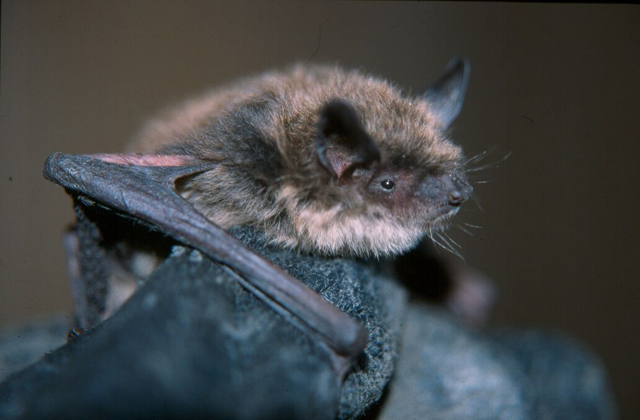Efforts to Help Bats Survive Deadly Disease Get a Boost
Research efforts aimed at identifying bat species or individual populations that may be able to survive the arrival of deadly White-nose Syndrome (WNS) received a boost this week with the announcement of $100,000 (U.S.) in new funding for cross-border bat science.
WNS is a devastating fungal disease that has wiped out millions of bats in eastern North America, triggering what is thought to be the fastest decline of wild mammals in history. Beyond eastern North America, infected bats were discovered in Washington State in 2016, leading scientists to anticipate that the disease may soon spread widely across the western half of the continent, including British Columbia and Alberta.
With WNS on western Canada’s doorstep, researchers from the Wildlife Conservation Society Canada (WCS Canada) and the University of Winnipeg are amplifying their efforts to understand which bat species and populations are most vulnerable to the disease, and where populations may be able to ride out the arrival of WNS and form the basis for an eventual bat recovery.
To build a picture of factors that best determine bat survival, the scientists are looking at everything from the fat stores of bats in western North America to cave or hibernaculum conditions.
“Building our knowledge of which western bat species and populations are susceptible before WNS arrives is critical,” says Dr. Cori Lausen, Associate Conservation Scientist with WCS Canada. “This information can be used to target interventions and strengthen conservation approaches near identified refuges for populations anticipated to survive infection.”
With a vast area to cover and a large diversity of bat species, building a picture of current bat health and conservation needs across western North America is a major undertaking. WCS and its partners are grateful to receive additional funding from the U.S. Fish and Wildlife Service to extend an existing research effort to Canada to include continental-scale variation in bat ecology.
“This critical funding will help us better understand the key geographic differences in bat physiology and potential disease pathways, which will in turn, help us to develop regionally tailored responses and ongoing monitoring efforts,” explained Dr. Liam McGuire, the project’s lead physiologist at Texas Tech University.
Jeremy Coleman, National White-Nose Syndrome Coordinator at the U.S. Fish and Wildlife Service said, “As White-nose Syndrome spreads west, anticipating how western bats will respond to the disease is of utmost importance. The work by WCS and its partners will help determine where management efforts will be most needed and what actions will produce the greatest benefit to bats.”
This work is already being advanced across western North America by a multi-disciplinary scientific team that combines expertise in disease ecology, bat ecology, bat physiology, mathematical modeling, and landscape ecology. The effort on the U.S. side is being funded by the government’s Strategic Environmental Research and Development Program. In Canada, the project has received initial funding from the Alberta Conservation Association, BC Ministry of Forests Lands and Natural Resource Operations, and Waneta Terrestrial Compensation Program.
“Bats are hugely important to our economy. They are the leading consumer of nighttime insects and if populations plunge as they have in the east, we could see rising damage to crops and forests as insect populations increase in the absence of bats,” Ms. Yvonne Dzal, a researcher with the Bat Lab at the University of Winnipeg, who will be joining the team this fall, says.
“We still have a massive amount to learn about western bats and not a lot of time to do it,” says Dr. Sarah Olson, an Associate Director of Wildlife Health with WCS and principle investigator involved in the Canadian and American projects. “Every research and conservation dollar helps us get one step ahead in the race against WNS. The clock is ticking and we need to be better prepared for what could be a major ecological and economic disruption.”
This fall, the additional funding will support field work in Canada to collect baseline data to help predict which bats will survive WNS.






















